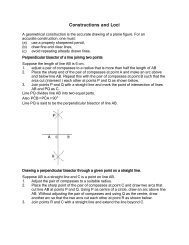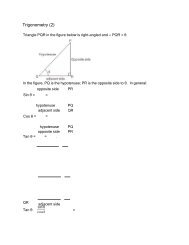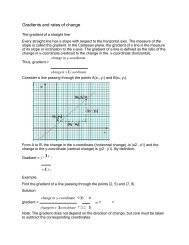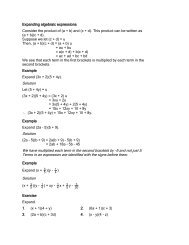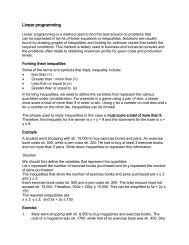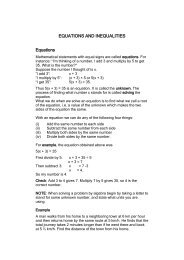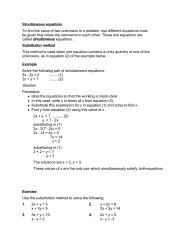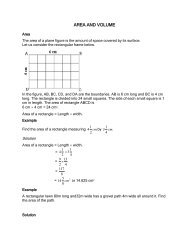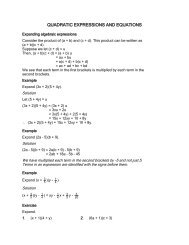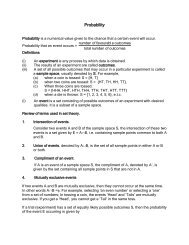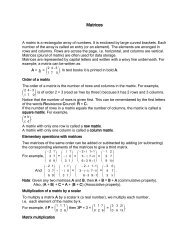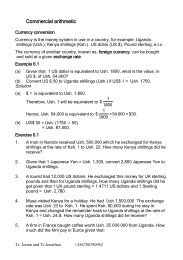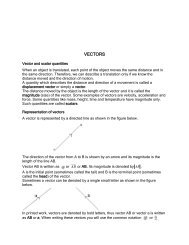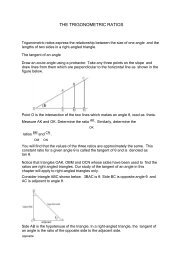J20
You also want an ePaper? Increase the reach of your titles
YUMPU automatically turns print PDFs into web optimized ePapers that Google loves.
From the results of (a) and (b), MN(P) = R(P).<br />
Example<br />
Draw ∆PQR with vertices P(3, 1), Q(6, 1) and R(6, 5).<br />
(a) Draw the image of ∆PQR under the transformation represented by the<br />
0<br />
1 <br />
matrix , label it P 1Q 1R 1 and describe this transformation fully.<br />
1<br />
0<br />
(b) Draw the image of ∆ P 1Q 1R 1 under a rotation of 180 0 about the origin and<br />
label it P 2Q 2R 2. Find the matrix that represents this transformation.<br />
(c) Describe fully the single transformation that maps ∆PQR onto ∆ P 2Q 2R 2.<br />
Find the matrix that represents this transformation.<br />
Solutions<br />
(a)<br />
P Q R P 1 Q 1 R 1<br />
0<br />
1 3<br />
6 6<br />
1<br />
1 5 <br />
= <br />
1<br />
0<br />
1<br />
1 5 3<br />
6 6<br />
The transformation is a reflection in the line y = x.<br />
(b) The image of ∆ P 1Q 1R 1 is ∆ P 2Q 2R 2 as shown in the figure below.<br />
1<br />
0<br />
is the matrix representing this transformation. This is a half-turn<br />
0 1<br />
<br />
about (0, 0).<br />
(c) From the diagram, the single transformation that maps ∆PQR onto<br />
∆ P 2Q 2R 2 is a reflection in y = -x.<br />
Under a reflection in y = -x, the identity matrix<br />
I J I 1 J 1<br />
0<br />
1 <br />
1<br />
0<br />
1<br />
0<br />
maps onto . Therefore, is the matrix that maps<br />
1<br />
0<br />
0 1<br />
<br />
0 1<br />
<br />
∆PQR onto ∆ P 2Q 2R 2



